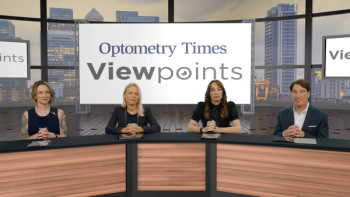
AAOpt 2024: How HEV-filtering soft contact lenses affect athletes' vision
In a study, a xenon slide illuminator was employed to mimic natural outdoor colors, allowing researchers to test brightness perception using a brightness-matching method, explains Billy R. Hammond.
Billy R. Hammond, professor at the University of Georgia, Athens, presented findings from a study on brightness perception and high-energy visible (HEV) filtering in soft contact lenses at the 2024 American Academy of Optometry meeting held November 6 to 9 in Indianapolis, Indiana. The study explored how these lenses impact brightness perception, drawing parallels to effects observed with yellow-tinted goggles, commonly used by athletes to enhance visual contrast and reduce glare. The team aimed to understand if these lenses could similarly boost brightness perception.
Hammond highlighted the phenomenon of chromatic contrast, where absorbing certain light wavelengths enhances edge sharpness and potentially induces a Purkinje shift, where rods—photoreceptors more sensitive in low-light conditions—intensify visual brightness. This effect might make the entire visual field appear brighter by stimulating both rod and cone activity.
The study employed a xenon slide illuminator to mimic natural outdoor colors, allowing researchers to test brightness perception using a brightness-matching method. Results showed that wearers of HEV-filtering lenses required increased energy to match image brightness, suggesting that these lenses amplified perceived brightness. Hammond noted that this enhancement aligns with benefits sought by athletes and military personnel, who rely on improved visibility for performance and safety.
Additionally, Hammond discussed related research on visual range, or the ability to see distant objects, which is distinct from basic visual acuity and contrast sensitivity. Factors such as blue haze can limit visual range, affecting image clarity. By reducing blue haze and enhancing chromatic contrast, HEV-filtering lenses could potentially extend visual range, benefiting individuals who need sharp outdoor vision, like pilots and athletes.
The study was funded by Johnson and Johnson Vision Care.
Newsletter
Want more insights like this? Subscribe to Optometry Times and get clinical pearls and practice tips delivered straight to your inbox.








































